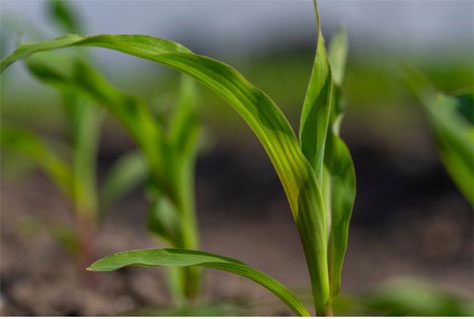The corn market has been relatively strong as Texas producers monitor planted fields in southern areas and prepare to plant in the High Plains.
But that strong market might not last due to market pressures and a large increase in projected planted acres nationwide, said Mark Welch, Ph.D., AgriLife Extension economist-grain marketing in the Texas A&M Department of Agricultural Economics.
“Spring planting for much of the Texas crop, from Central Texas moving south has a strong crop going,” Welch said. “In far South Texas, they were dry early, and there were some acres that were not planted because of limited water. As you move up the coast into Central Texas, the crop has a pretty good start.”
Strong early market, but demand and yields prompt concerns
Nationally, planting is just getting started, with only about 4-5% of the expected acres planted so far. Welch said one concern within the corn market is that U.S. planting prospects anticipate 4-5 million more acres of corn compared to last year.
“Compared to where corn prices ended up last October at harvest, the futures prices now are well above those levels,” Welch said. “So, the question is can we hold that level of price optimism if we have a significant increase in planted and harvested acres and if the yields hold up about where they were a year ago.”

The projected U.S. corn acres and the potential for a large Brazilian corn crop could significantly impact the eventual price, Welch said. Those factors could be offset by increased domestic demand and other market pressures, such as tariffs and trade concerns, as the 2024 crop marketing year comes to a close.
“I think much of the concern is on what that yield potential will be, particularly for the U.S. crop,” he said. “If we increase acres by 4 million to 5 million, as farmers indicated in the prospective plantings report and hit a trend line — an average of 180 bushels per acre — that would be another all-time record high for yield.”
It’s hard for Welch to imagine that corn prices could remain this high if record production materializes while demand, especially from export markets, remains in question.
Plan ahead; lock in prices
Welch said these conditions incentivize producers to market their crops to outlets now, whether through a direct contract or a sale with the grain elevator, feedlot, ethanol plant or other buyer.
“Have that conversation: ‘Is there something we can do to lock in these prices now?’” he said. “We have tools using futures and options markets. At the very least, establish a floor under these markets by employing various trading strategies, such as minimum price contracts. There’s a cost to do that, but recognize that if we really see this amount of acreage, prices aren’t likely to hold up.”
Ultimately, Welch said a range of factors will impact corn prices. Timely planting schedules, weather conditions throughout the growing season and across the U.S. Corn Belt, overall yields, and the impact of tariffs on grain sorghum prices will all contribute to the supply-demand pressures that influence the market.

